A few years ago when I was in Lisle, Illinois I took this photo of turf:

Can you see the filmy white substance within the turf? What is it?
Answer and another photo on Monday – have a great weekend!
We’re back to civilization, so I can finally post the answer to the puzzle. I’ve been without cell service and our only computer access was dial-up at a glacial 37.2 kbps. Yes, kbps.
Back to our puzzle. Here’s a larger version of Friday’s photo:
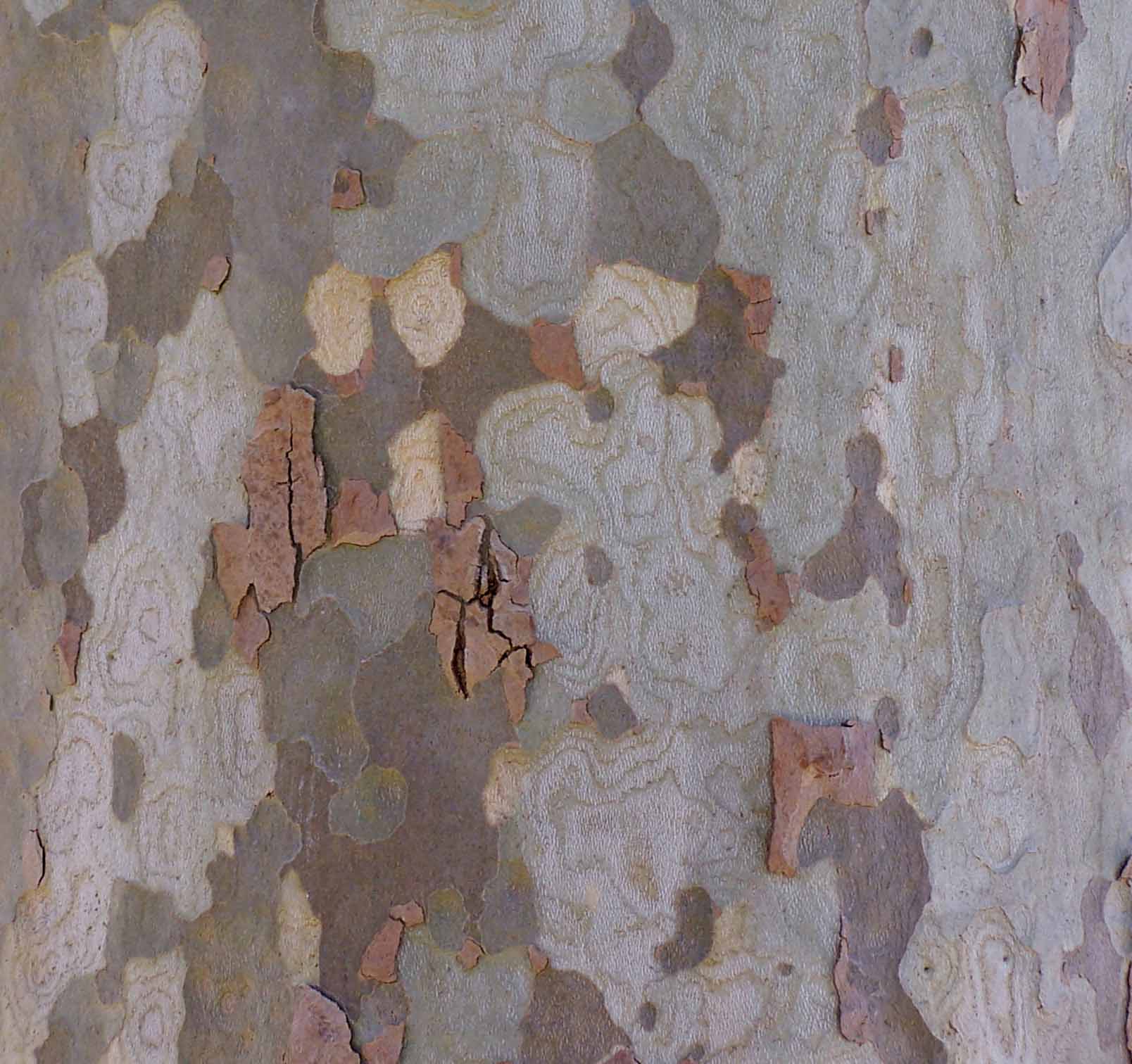
It is bark, as many astute readers pointed out. As far as I know, it’s a London plane tree (Platanus), but given the promiscuity of the genus, who knows exactly what species or hybrid it is?
Other tree species were suggested by others and I immediately Googled them to see what their bark looked like. Check out Pinus bungeana (thanks to @Garden Hoe), Parrotia (from Deirdre), Smilax bona-nox (Bryn), Stewartia (one of Deb’s hedged bets), and Corymbia maculata (from Jimbo).
And now, thanks to Ed, I will forever look for pictures hidden in bark. Someone should make a “Gardener’s Rorshach test” from variegated bark!
Well, either the puzzle was too easy or you guys are too smart! Deb, Christopher, Lori, Foy, Jim, and Hap go to the head of the class – it was, indeed, staking material left on way too long. Here’s a photo from over 10 years ago. I’m not sure this is the very same tree, but it’s from the same parking lot/torture chamber:
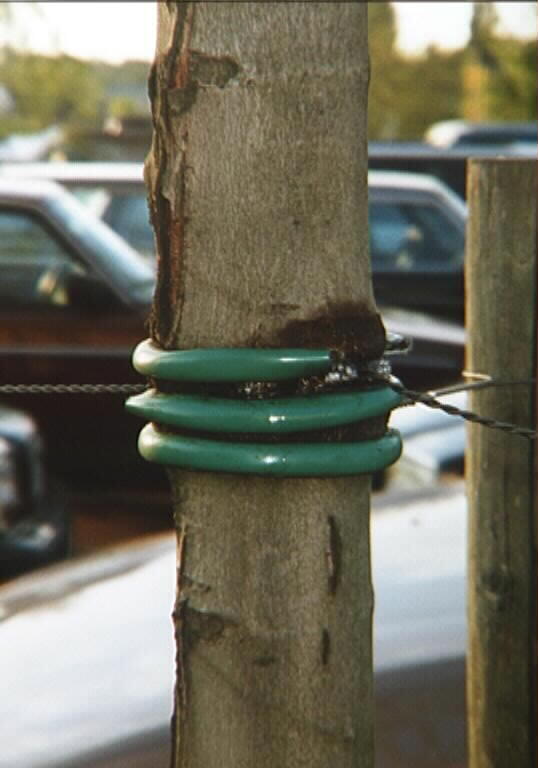
I “liberated” these trees with my handy wire-cutters (never leave home without them) shortly after taking the pictures. Several take-home lessons from this example:
1) Plastic tubing does not protect bark from girdling wire injury
2) Parking lot trees, even in very upscale shopping malls, are abysmally managed
3) Trees are amazingly resilient
Have a good week!
As you know, I wanted to get something intriguing for this week’s puzzler from the NW Flower and Garden Show. Alas, there was nothing that jumped out at me, so I’m digging into my photo archives.
Here is a recent photo from a parking lot tree. About four feet up the trunk, I found this interesting growth. No, I don’t know what the tree species is because (a) it wasn’t in leaf and (b) I’m a taxonomy klutz. But I can assure you that the odd bark morphology has nothing to do with genetic identity.
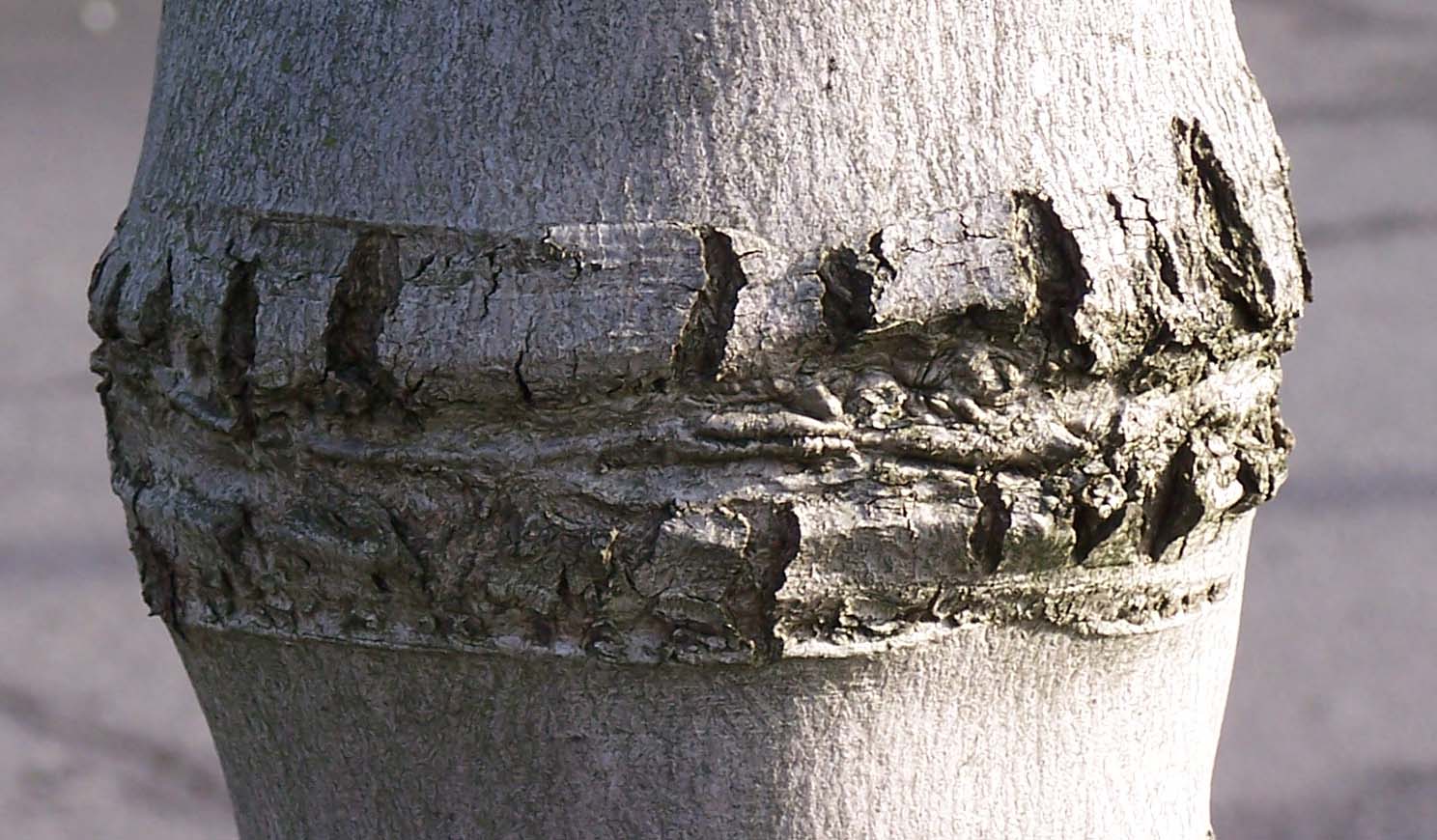
I can also assure you that there is no foreign material under the bark that’s causing this phenomenon. The question: what DID cause it?
The answer – and a revealing photo – on Monday!
As you might know, I’ve been at the NW Flower and Garden Show this past week, and yesterday I had two seminars to give. So I didn’t have a chance to post a quiz, and this morning I’m back over for a few hours before I’m done.
I’m hoping to find an interesting Garden Prof question topic at the show, so I’m taking the camera today. If I can’t, I have a backup. But I promise there will be a question up by today!
Wow! What a lot of great brainstorming over the weekend! I would venture to say that The Garden Professors have the smartest students in the world.
On to the answer…or answers. First, the phenomenon. It’s called paraheliotropism – literally, a movement to protect (the leaves) from the sun (yes, Trena, it is a tropism!). This is the opposite of another phenomenon called heliotropism, or solar tracking. Sunflowers famously do this, as do a number of arctic species that collect solar warmth for the benefit of their pollinators. (An aside: if you have never watched David Attenborough’s The Private Life of Plants you must add it to your Netflix queue. Right now.)
But our saxifrage (thanks, Holly! I’m such a taxonomy imbecile) is reducing solar exposure by positioning its leaves in parallel to the sun’s rays. This is a reversible movement and helps reduce photooxidative stress, leaf temperature, and water loss. It’s an important strategy as the newly emerging leaves are actively expanding. If turgor is reduced by high temperature or water loss, so is the final size of the leaf.
Finally, these rapidly expanding leaves have relatively thin cuticles (if they were thicker the leaves wouldn’t be able to expand as well). The cuticle gives further protection to the leaf from water loss due to heat, drought, wind, or even late season freezing events (thanks for that addition, John!). The cuticle will mature after the leaf has reached its full size.
So, as Foy suggested, this is a way for leaves to "harden off" and reach full size before exposing themselves to the sun. Aren’t plants cool?
And you are all such great participants! Group hug! Now, back to work.
Spring is coming…and soon herbaceous perennials will poking their leaves up through the mulch:
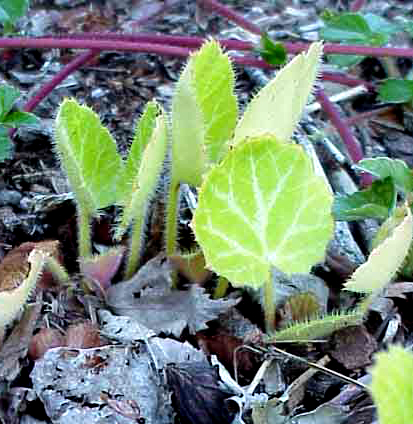
Obviously as leaves first emerge they’ll be vertically oriented – but these ones have remained vertical days after emerging. Eventually they’ll become horizontal. But today’s question is – what’s the advantage in remaining vertical? And what’s this phenomenon called?
Answer on Monday – have a nice weekend!
Here’s Friday’s photo without my edits:
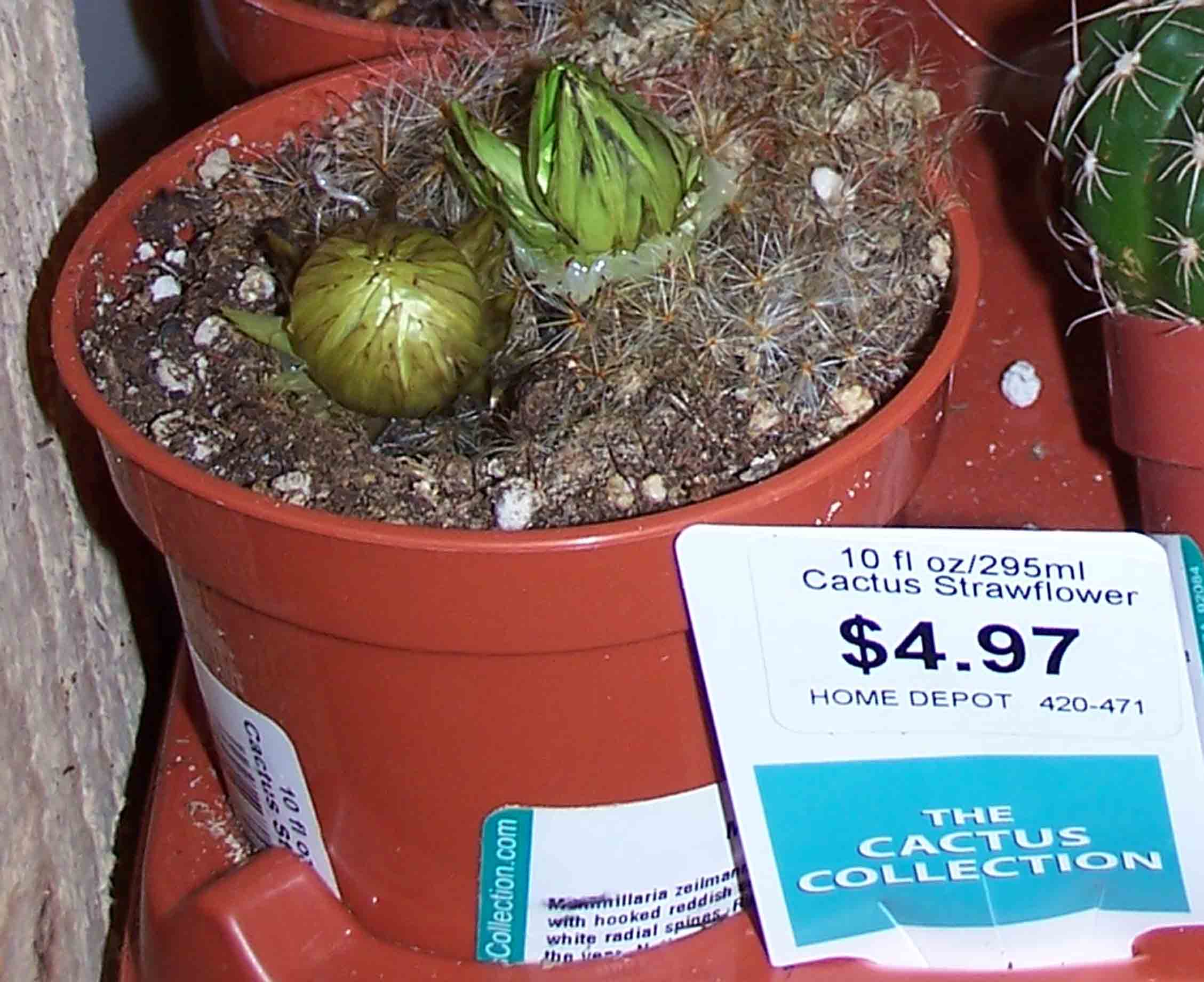
As you can see, there are tell-tale globs of hot glue around the base of the bud on the right. Hap was correct – it’s yet another “cactus strawflower” whose cactus portion had disintegrated, leaving only the strawflower graft behind. But out of context it could easily be mistaken for a bulb of some sort. Let the buyer beware!
OK, enough tormenting of my fellow GP. On to today’s photo challenge.
Is it a miracle? Is it a resurrection plant? How do you explain these large buds emerging from the soil?
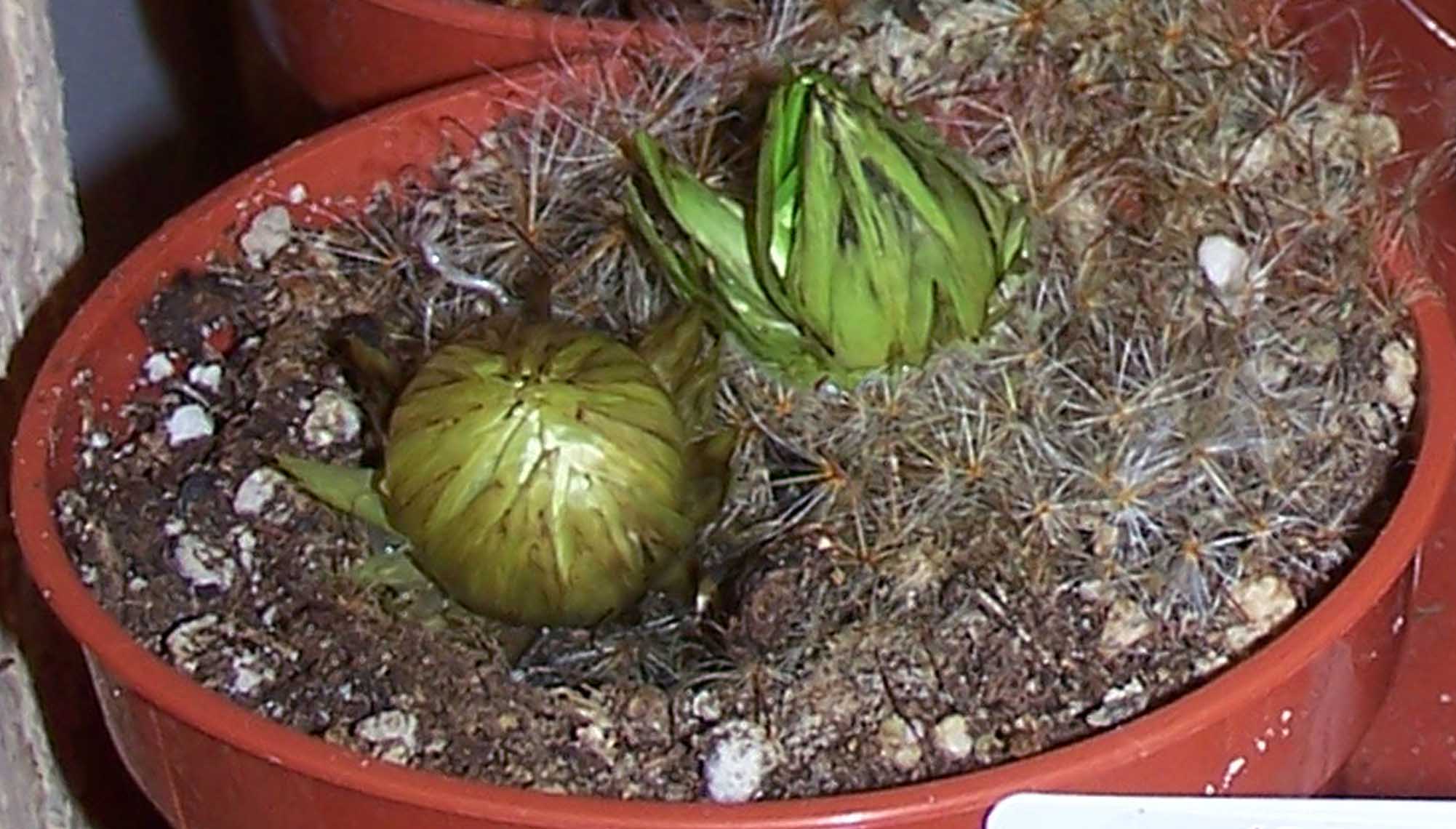
A disclaimer: a portion of this photo has been Photoshopped. I promise the altered area was not of plant material. Monday’s answer will include the untouched photo in bigger context